CMA’s Reconciliation Program
National Survey Results
Following the mandate set out by the Truth and Reconciliation Commission of Canada’s Call to Action #67, the Canadian Museums Association (CMA)’s Reconciliation Program launched a preliminary national survey to better understand how museums are addressing reconciliation and Indigenous heritage within their institutions.
The gathered responses and input are a starting point for the Program’s two-year engagement process and provides an environmental scan and insight on reconciliation and Indigenous-related initiatives taking place across the country.
This article reports on the statistical outcomes of the survey. The CMA felt that the data in themselves, shown below, are particularly important to be communicated. They will then serve as a basis for further development of this Program.
The survey’s principal purpose was to learn more about museum policies and practices surrounding Indigenous collections, how museums engage with communities, and key challenges and questions museums may have concerning Indigenous relations and representation.
The survey was sent to 1,548 institutions, of which 1,499 were non-Indigenous and 49 self-identified as Indigenous. The principal focus was to learn how non-Indigenous institutions deal with Indigenous collections and presumed that Indigenous museums deal with their collections in culturally-appropriate and established ways. The distribution list was comprised of both CMA members and non-members; to encourage broad participation the CMA promoted and shared the survey on social media and through partner networks, such as provincial and territorial museum association platforms.
Launched on 27 November 2019 and closed on 10 January 2020, the survey and related communications were developed and disseminated in both official languages.
291 non-Indigenous institutions and 13 self-identified Indigenous institutions responded to the survey, for a total of 304 surveys collected with at least one response completed. The response rate was relatively low. This may mean several things, among them that institutions that do not have policies regarding Indigenous collections, were not stimulated enough to respond or that the CMA did not focus our target audience properly given its broad distribution through, for example, social media. Or, perhaps, that there is a need to further the dialogue and connection on this topic as the CMA communicates and moves along the Program. Still, some three hundred responses give a good environmental scan.
The survey questions were developed in conversation with the CMA’s Reconciliation Council, a body of experts in Indigenous cultures and museum practices who are providing guidance and advice to the CMA’s Reconciliation Program.
The survey comprised six questions, with all but one being qualitative, thereby giving survey participants a high degree of flexibility and nuance in responding to sensitive and challenging subject matters. Approximately 1,500 pages of narrative responses were reviewed, manually coded and quantified, and then analysed. Where possible, data were coded into mutually exclusive categories; otherwise, data were grouped according to commonly occurring themes or relevant prompts found in the survey questions.
Respondents’ profile
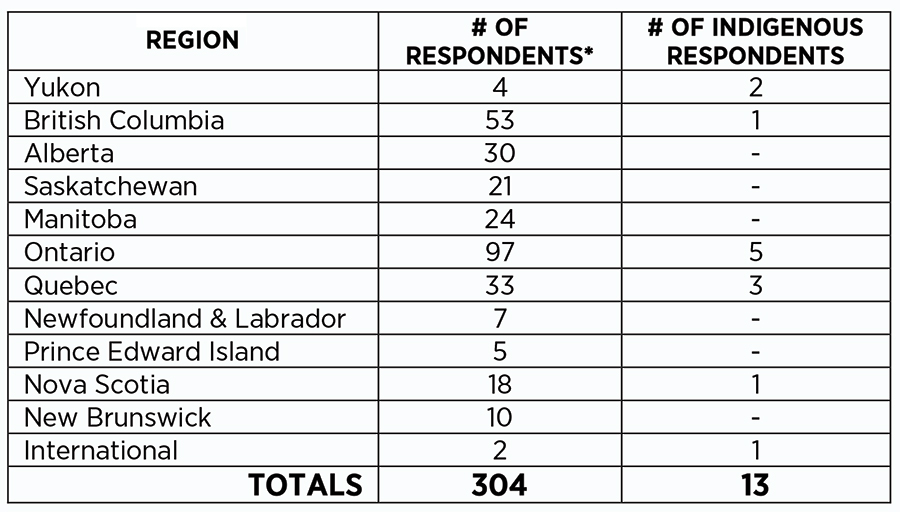
As noted, a total of 304 responses were collected from all ten provinces and from the Yukon. No responses were recorded for the Northwest Territories or Nunavut.
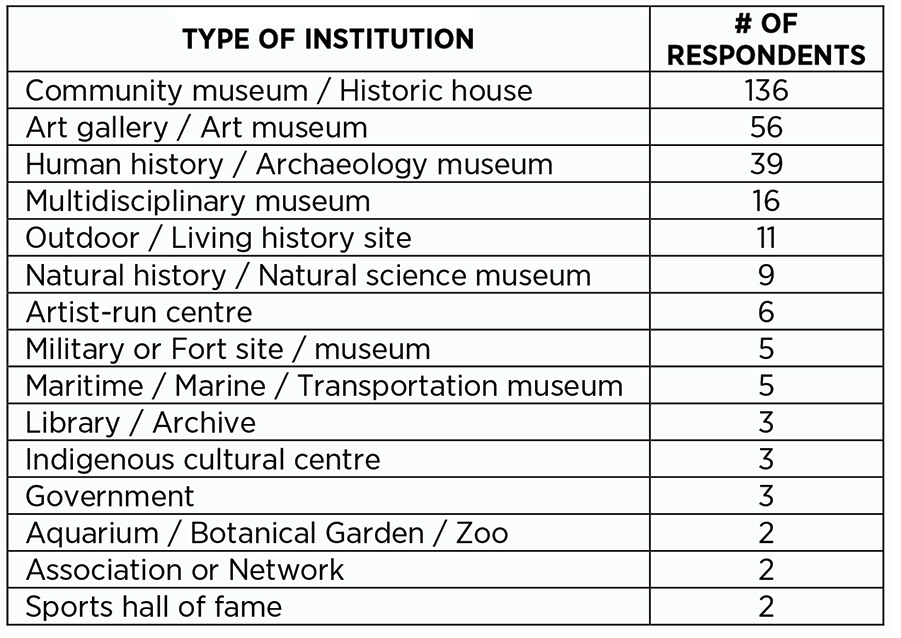
Respondents were asked to select the type of institution that most closely resembles their mandate. Single responses were recorded for conservation centre, children’s museum, nature or conservation park, science and technology museum, museum funder, and non-governmental organisation. The remainder are presented in descending order:
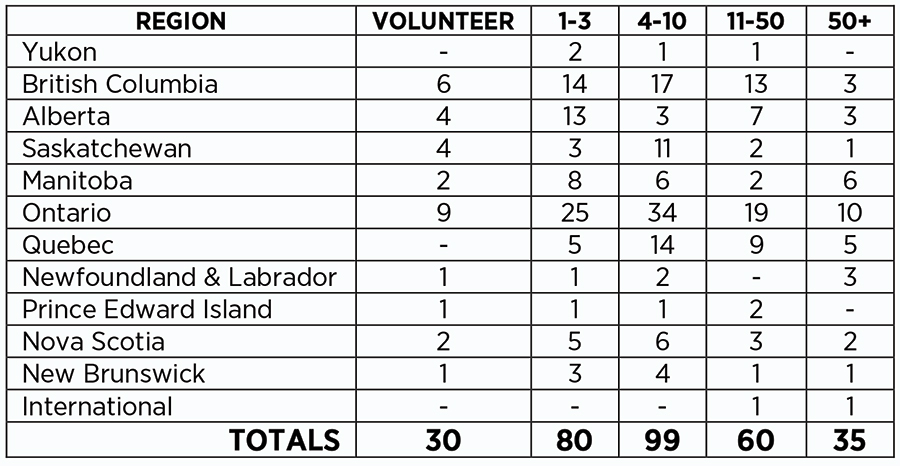
Respondents were also asked about their staff size.
Survey results
Question 1: For which activities does your institution engage with Indigenous communities or entities?
Respondents were asked to select all the activity areas where their institution engages with Indigenous communities or entities. For the purposes of this survey, engagement was defined as a broader and ongoing process of sharing information with the community and seeking its feedback, with the purpose of involving the community in the process of decision making.
304 respondents completed this question. Responses are presented in descending order:
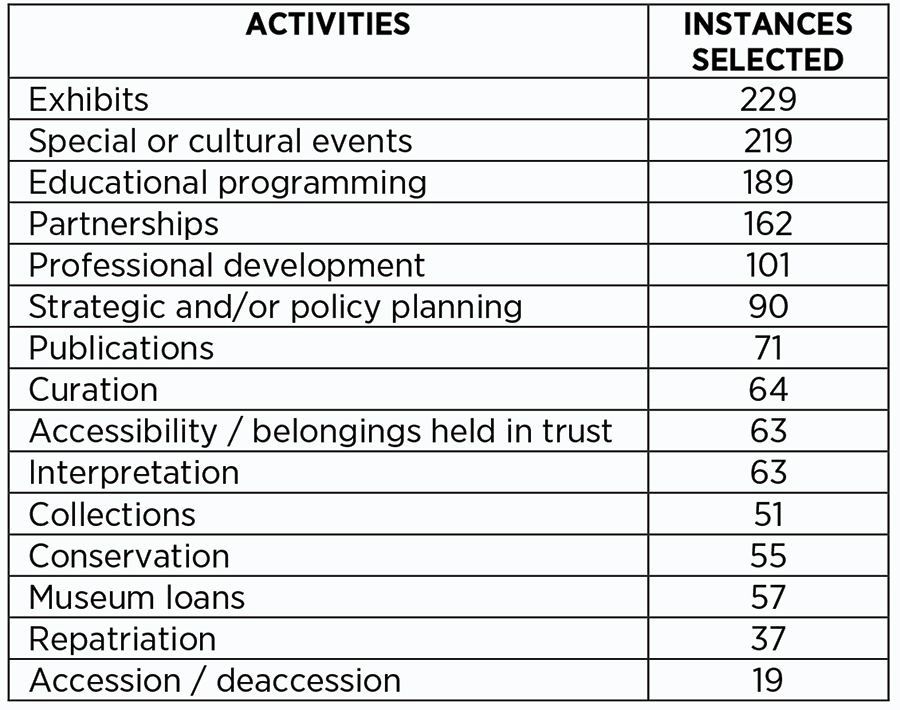
Other responses offered that were not included in the predefined list include: art installations; using cultural facilities; fieldwork and research; public speaking engagements; and capacity building such as recruitment and board participation. 15 respondents indicated they have little to no contact with Indigenous communities, institutions, or entities. Some elaborated that they had no Indigenous communities in their geographic area.
Question 2: What are your institution’s policies, practices or guidelines for working specifically with Indigenous communities or entities?

258 responses were collected: 248 from non-Indigenous institutions and 10 from self-identified Indigenous institutions.
Question 3: What do your institution’s collection management and/or development policies contain with regards to Indigenous materials or subject matters?
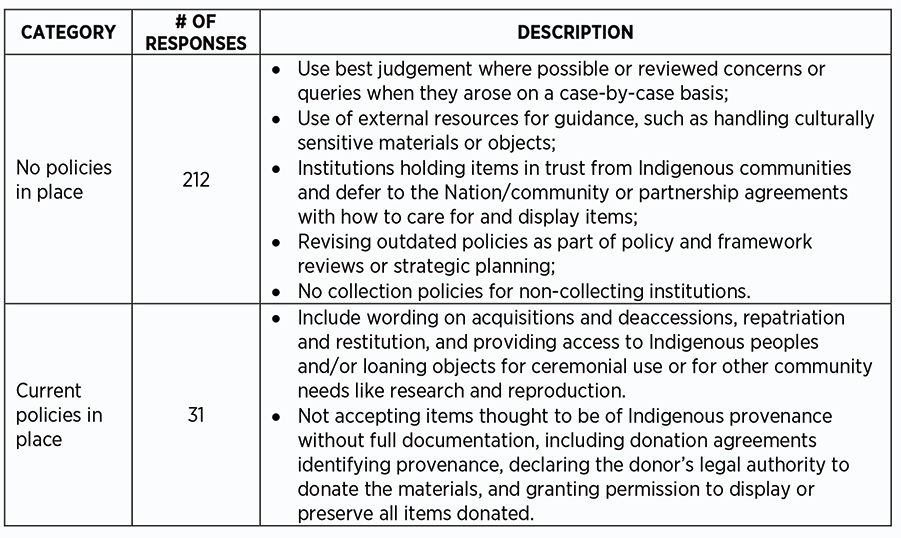
243 responses were collected: 233 from non-Indigenous institutions and 10 from self-identified Indigenous institutions.
Question 4: In what capacity is/has your institution responding to the 1992 Task Force on Museums and First Peoples and/or the 2015 Truth and Reconciliation Commission’s Calls to Action?

216 responses were collected, 208 from non-Indigenous institutions and 8 from self-identified Indigenous institutions.
Action on reconciliation frameworks
176 survey participants indicated that they had responded to the reconciliation frameworks.
No action on reconciliation frameworks
39 survey participants admitted to not actioning any specific measures in their institutions, with various responses such as: assessing that the frameworks do not apply to their institutional mandates; a lack of historical certainty that Indigenous populations lived in their region; no existing relationship with neighbouring Indigenous communities; a lack of resources and knowledge on how to affect change; and a general unfamiliarity with the frameworks. Of these 39 responses, 9 indicated they were unaware of the existence of the Task Force Report on Museums and First Peoples.
Question 5: What are some of the challenges your institution faces on Indigenous matters?
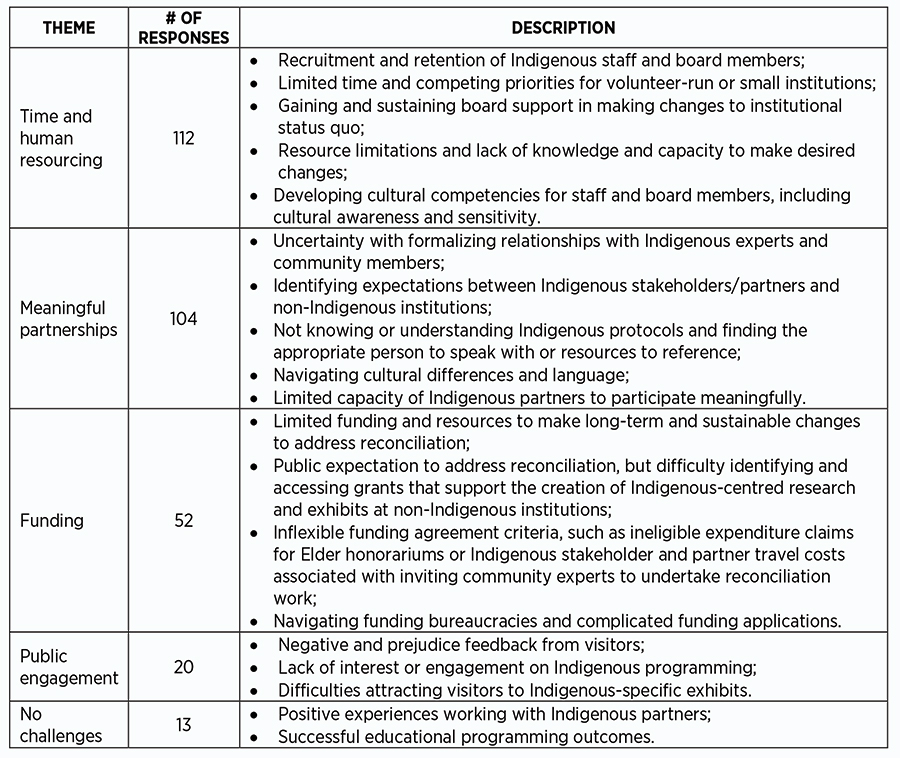
220 response were collected: 210 from non-Indigenous institutions and 10 from self-identified Indigenous institutions.
Question 6: What kind of tools and products could the CMA’s Reconciliation Program produce that would be the most beneficial for your institution in addressing reconciliation and Indigenous representation?
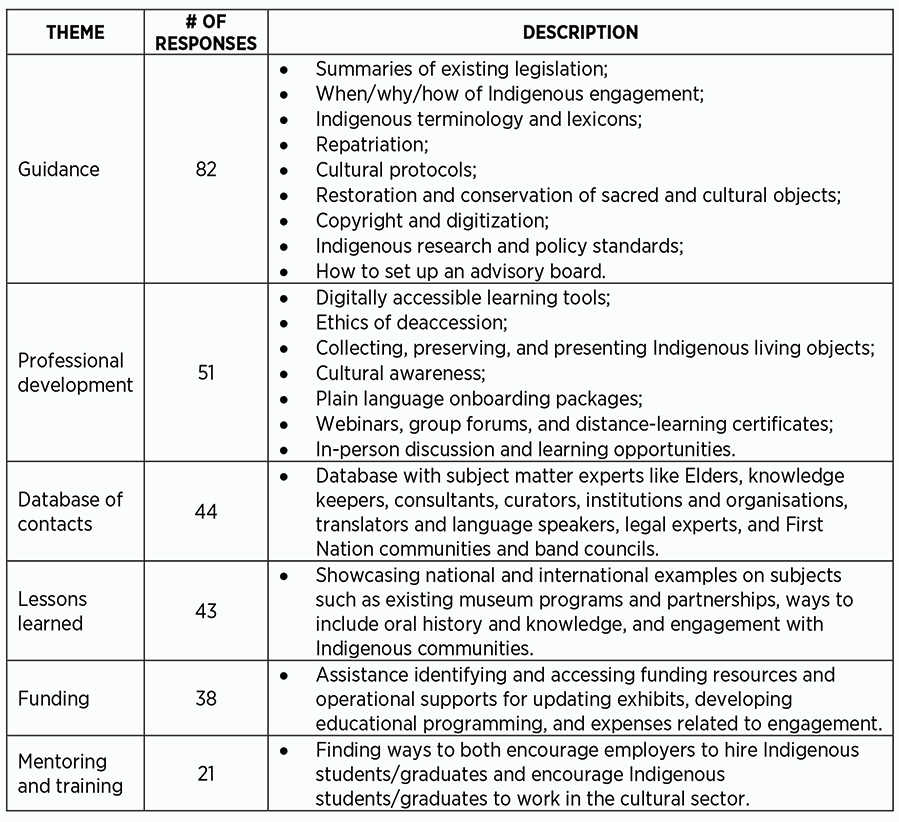
194 responses were collected, 186 from non-Indigenous institutions and 8 from self-identified Indigenous institutions.
NEXT STEPS
The survey will be followed by opportunities to provide feedback into the CMA’s process, including through online and in-person cross-country engagements that seek guidance from Elders and Cultural Knowledge Keepers, interview museum leaders, organize talking circles and roundtables, and learn from retired museum professionals. The CMA is closely monitoring travel and social distancing advice during this COVID-19 pandemic as well as the impact the pandemic is having on Indigenous communities. Site visits will resume when travel is possible and physical contact with Indigenous communities welcome.
The CMA will also consider launching more in-depth and targeted surveys to specific participant groups, to gain a more fulsome understanding of how best to affect positive change in contemporary museums policies and practices.
The CMA gratefully acknowledges that funding for the Reconciliation Program is made possible by the Government of Canada through the Department of Canadian Heritage’s Museums Assistance Program.
